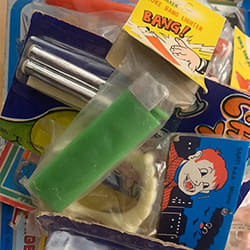
Figure 1
Figure 1 shows the rankings of the fishes consumed by Spanish households in 2022, as released a few weeks ago by statistics company Statista on October 4. Leading second-ranking salmon by a long margin is hake. Spain is a land surrounded by sea, including the Mediterranean Sea, the Atlantic Ocean, and the Bay of Biscay, and seafood has historically made up a large proportion of the Spanish diet. Gracing the dining tables of Spain have been seafoods such as crustaceans and shellfish; tuna, salmon, bream, and flounder; blueback fishes, which are not often eaten in Scandinavia, such as mackerel, horse mackerel, and sardines; deep-sea fishes like monkfish; octopus, which used to be called “devil-fish;” as well as the ever popular squid and even sea anemones and barnacles. All the same, the size of the “Other” category is noticeably large. Yes, Spaniards really are full of love for seafood.
Although hake now leads the consumption rankings for fish, it used to be treated as a high-class fish. But fishing methods, refrigeration technology, and shipping methods have advanced, and imports have increased, which, combined with its affordability and ease of preparation, have launched it to the top rank. While there are 16 varieties of hake around the world, the 4 varieties below make up the majority of the hake consumed in Spain, and they mostly come from the southern hemisphere.
・ Argentine hake (Merluccius hubbsi): Frozen, head off, cutlets, fillets, skin on, skin off
・ Southern hake (Merluccius australis): Frozen, head off
・ Senegalese hake (Merluccius senegalensis): Refrigeratederl
・ Shallow-water Cape hake (Merluccius capensis): Frozen, refrigerated

Photo 1
Almost all of these imported fish are caught in large quantities using trawling nets, which damage the fish’s body and also greatly affect its flavor. Photo 1 shows shallow-water Cape hake (South Africa) stocked by the local store of a nationwide supermarket chain. They cost 9.95 euros per kilogram (1,560 yen), but if the edible weight is, say, 50% of that, then the cost is more like 3,000 yen per kilogram. As a bonus, the fish looking downward are monkfish, and they even sell just the heads. They are usually used to make stock apparently. At my place, we just throw the head and bony bits left over after filleting into our monkfish hotpots and satisfy ourselves by sucking on the bones and skin.
Then there is the hake caught in Spanish waters, which is caught in small quantities and treated as a high-class food.
・ European hake (Merluccius merluccius): Sold fresh (not frozen) and whole. They are only ever caught using the single-hook method or by longline, which minimizes the stresses on the fish’s body and is as different from bottom trawling, which completely scours the seafloor, as chalk is from cheese in terms of the environmental impact. The catch and fishing methods are also restricted. That inevitably affects the price, which is easily at least 3 times the price of imported hake. The name “merluza” itself is Spanish and comes from “merluccius” (the scientific genus name) with “mer” meaning “sea” and “luccius” meaning “pike.” So, it was named the saltwater version of the similarly carnivorous freshwater northern pike.
Hake is actually extremely popular in Japan too, and even if you don’t know the name, everyone has probably tried it once. It is a staple ingredient of “noriben” (nori seaweed lunch boxes) and appears in fast-food joint fish burgers under the generic name “deep-fried white fish,” without the details of where it came from being publicly announced. Its minced meat is also used as an ingredient in things like “chikuwa” (tube-shaped fishpaste cakes) and “hanpen” (made from minced fish with Japanese mountain yam). Even without divulging its name, it has taken advantage of its status as an everyday household fish and has been making a great contribution to the diet of the Japanese people. By the way, it’s New Zealand hake (Macruronus novaezelandiae) in particular that’s being imported into Japan, mainly from South America and New Zealand. Although it’s called “hake,” its scientific classification is “hoki.”
Incidentally, there is a song about hake called “Itoshi no Merluza” (“My Dearest Hake”). It is a mood song that Jun “Tablet” Tabuchi himself is entirely responsible for, writing the words and music and also singing and performing the music. It is a song in praise of noriben and deep-fried hake given a flamenco twist, as if in response to the Spanish name. If you’re interested, please take a look at it on a video website.




























































